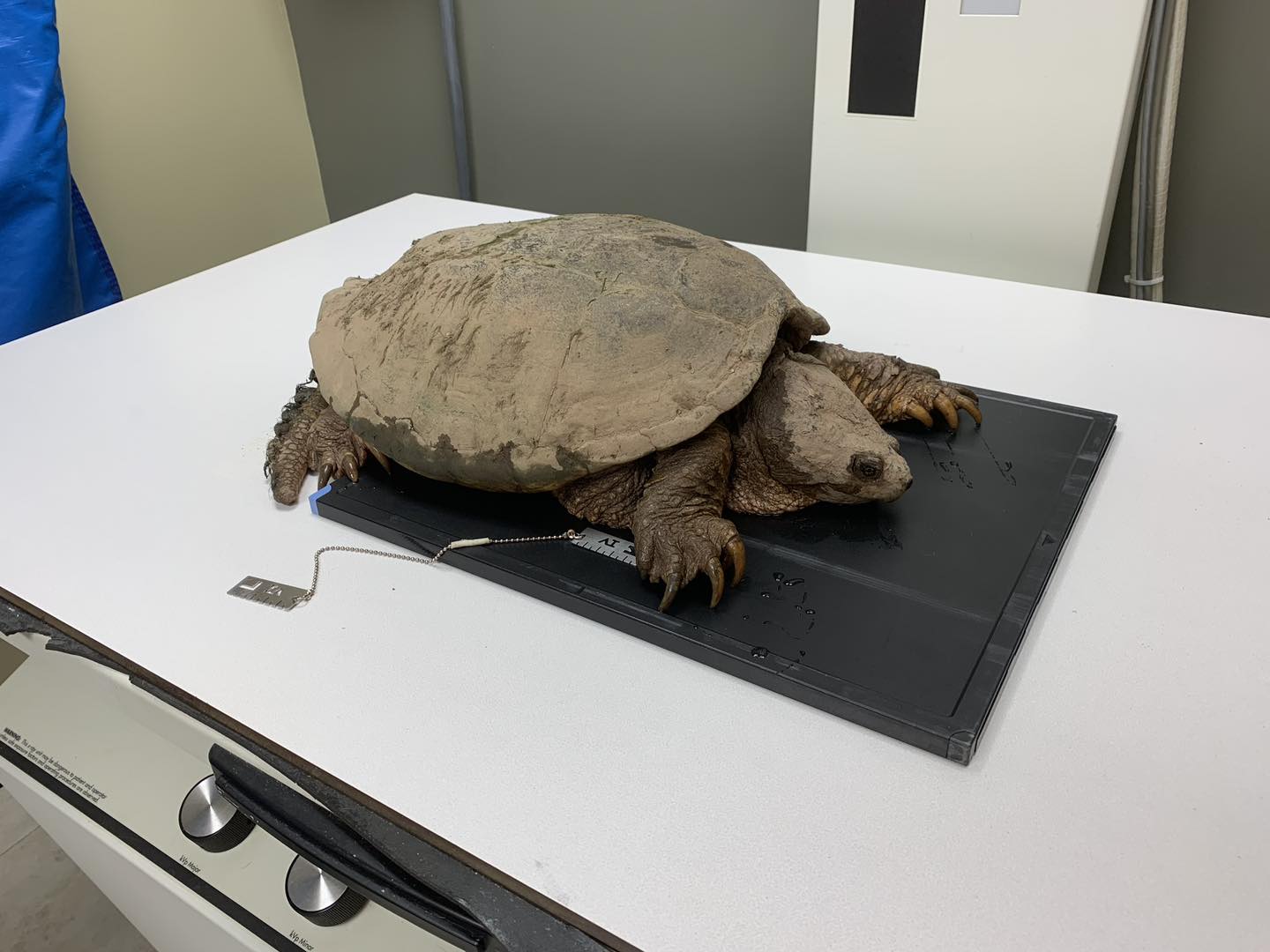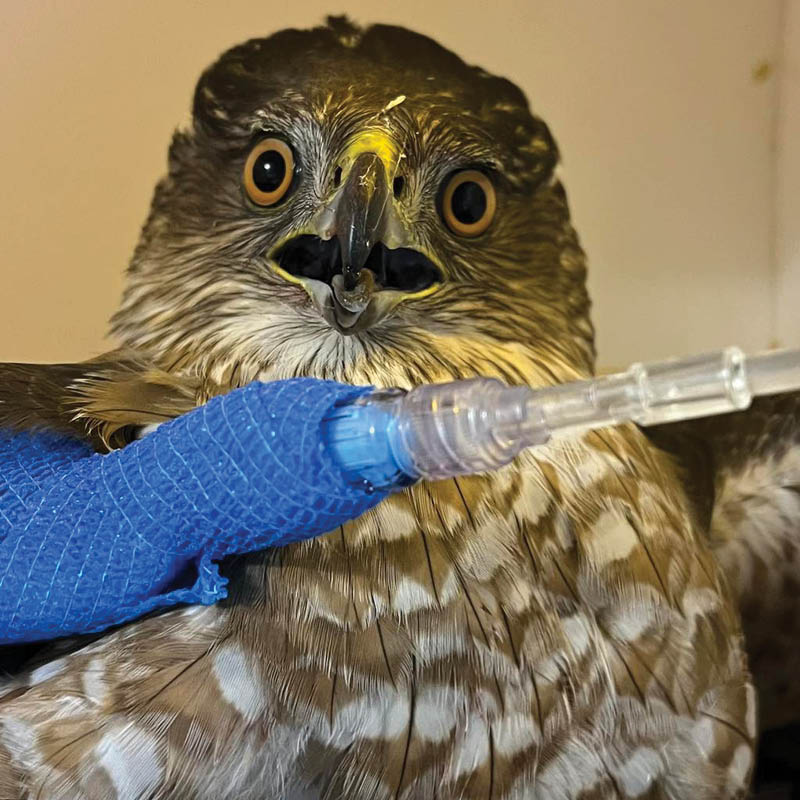Hobbitstee Wildlife Refuge in Nanticoke, Ontario is well equipped to handle sick and injured animals, but they encourage everyone to learn some simple facts to help keep wild animals safe.
Anyone who spends time outside is likely to encounter a wide variety of wildlife, like turtles, birds, and even moose. While it’s great to view and connect with nature, Chantal Theijn, the authorized wildlife custodian and founder of Hobbitstee, says prevention is key. It starts with keeping a safe distance, especially from larger animals.
Roadside Assistance
Turtle crossing signs are a common sight in rural Ontario. Do you know what to do if you see a turtle trying to cross a busy road? Such crossings can be dangerous for turtles, especially on highways.
“Turtles are generally on the move in late spring when things are starting to warm up. This is when they move from their wintering grounds to their summering grounds. Then in the fall, they start moving again back to their wintering grounds. Those are the times when you’re more likely to see turtles crossing the road,” Chantal says.
But even throughout the summer, some turtles are still on the go.
“Most of the turtles you see crossing the road are breeding females who are full of eggs, typically from the end of May to the beginning of July. When they are looking for places to lay their eggs, they sometimes have to cross a road to get there,” Chantal explains.

A female snapping turtle recently found her way to the Hobbitstee property to lay her eggs. Staff snapped a picture while she was on her way to the meadow.
Female turtles are deliberate about where they choose to lay eggs.
“Turtles have no post-egg laying maternal care. All their maternal care is done prior. Where they lay their eggs is very carefully chosen and precise based on many factors like the direction the sun comes up, for example,” she says.
If you are going to help a turtle cross the road, Chantal says it’s important to help the turtle cross in the direction the turtle was going.

A turtle being assessed after being brought in to Hobbitstee Wildlife Refuge.
“Don’t take the turtle and bring it to a pond and don’t turn the turtle around. It’s going to go where it wants to go,” she says.
Put simply, Chantal explains that turtles are born with a map in their heads of the terrain they live in. When the terrain changes, as happens when a subdivision is built, they can become confused about where things are.
Chantal suggests a few things to keep in mind. “Make sure you’re not being a traffic hazard yourself. Only move the turtle when it is absolutely safe for you to do so. Snapping turtles aren’t very friendly so you also have to make sure you aren’t going to get hurt when helping them cross the road. When moving a turtle, it’s a good idea to wear gloves to protect yourself. You can also use a shovel to pick them up and bring them to the other side of the road,” Chantal says.
View from the Car
Moose are another common wildlife encounter up north. There are a few things you can do to keep them safe.
“Moose are well on their way to becoming an endangered species. The moose population is declining quite rapidly because of habitat loss and fragmentation. There are also diseases targeting moose that are fatal. We need to have extreme caution with our moose population,” Chantal says.
When you see a moose, it’s important to take these safety precautions.
“Drive with care so that you don’t hit them on the road. Don’t disturb the animal. The moment they see you, you are now within their personal space. Some moose get used to people stopping to stare at them so they’re less bothered by human presence, but keep in mind that angry moose can be extremely dangerous. Don’t get out of your car. View them from your vehicle. Don’t take selfies with wildlife because that can turn out badly too. Keeping your distance is key,” she says.
Urban Wildlife
Wildlife can be found in towns and cities as well. Ponds and rivers are popular with geese and ducks and while it may be tempting to share a piece of your lunch with them, this can actually be quite harmful.
“Bread is like potato chips to birds. It will fill them up but it doesn’t have many nutrients compared to the food consumed in their regular diet. When people feed them things like bread, they aren’t getting the minerals and nutrients they need,” Chantal says.

A goose being assessed at Hobbitstee.
Beyond its low nutritional value, human food can have other consequences for water fowl.
“In places like parks where there are ponds, these habitats can support a certain number of ducks and geese. But when we add an additional food source like bread, it’s going to increase the number of ducks and geese that live there. This can negatively impact the habitat in that space,” she explains.

This duck is a Greater Scaup. According to Hobbitstee, “Scaups are one of those duck species that can’t really walk due to the placement of their feet. These ducks are made for diving, not walking. They are rarely out of the water and never far away from the water’s edge.”
It can also affect their instinctual habits as well.
“A third problem is that plentiful unnatural food sources are proven to prevent geese and ducks from migrating because their migration is tied to the availability of food,” she explains.
The Rehabilitation Journey
While we can do a lot to help prevent animals from getting sick or injured, accidents still happen. When an animal is taken to a wildlife refuge like Hobbitstee, each animal goes on a unique rehabilitation journey, depending on the challenges facing the animal.
“At some point, we’ll do a full exam on the animal. We might not do it right away though because some animals are too stressed or too weak and they wouldn’t be able to withstand a full exam. Particularly when it’s a traumatic injury, we will start off with fluids and pain medication. Then we’ll let it sit and rest and have those kick in,” Chantal says.
After the full exam, they’ll start to make some decisions about the next steps in the animal’s care.
“Sometimes with traumatic injuries, we will see things that we know right away aren’t good and there’s no chance of survival. But if we’re pretty sure that the injury isn’t life altering, we will give them a moment to recover and go from there,” she says.
The recovery process looks different for every animal that comes into Hobbitstee. Some will need x-rays, surgery, cage rest, or physiotherapy. It all depends on the animal and its injury or illness.

A Cooper’s hawk receiving care at Hobbitstee.
“There are some diseases that we are monitoring, like the highly pathogenic avian influenza. By law, we have to euthanize any animal that comes in that is symptomatic for that disease. When an animal comes in with symptoms of rabies, we have to call the Public Health Unit who will then get in touch with the person who brought the animal in and determine what level of contact they’ve had with the animal,” she explains.
Other illnesses aren’t as complicated.
“Sometimes an animal has a respiratory illness so we’ll give it a course of antibiotics and it will recover after that. We’re supervised by a veterinarian who makes the medical decisions,” Chantal says.
When we learned about baby animals last time we spoke with Chantal, she explained that sometimes there are instances when the parents of a baby animal have gone missing.
“Orphaned animals who are otherwise healthy are assessed to determine how old they are and then we proceed with their care from there,” she says.

An orphaned fawn being bottle fed at Hobbitstee in June 2023.
Each animal’s journey takes time, but their time spent in rehabilitation can vary widely.
“We have a red-tailed hawk right now who somehow lost all the primary feathers on one of his wings. He is going to have to go through several molts to get all his primary feathers back. He’ll be here for a year and a half at the very least. Turtles are slow healers so they tend to be in care longer. On average across all cases, an animal is usually here for about 3 months, but it depends on so many factors,” Chantal says.

A red-tailed hawk receiving care last year.
If you come across a sick or injured animal, contact your local animal shelter or veterinarian and they can let you know where the nearest wildlife refuge is.
Hobbitstee Update
We learned last year that Hobbitstee is expanding, and now those plans have been put into action.
“We’re building a brand new wildlife hospital. We just started last week so it’s going to be a while before it’s done. We have 49 acres here so the wildlife is primarily housed outside while the weather is nice. They’re away from all the noise of the construction and where the equipment is,” Chantal says.
Their current operation is currently set up in a shipping container so they can continue to provide care while the new building is under construction. The new building is expected to be ready for interior work to begin this Fall.